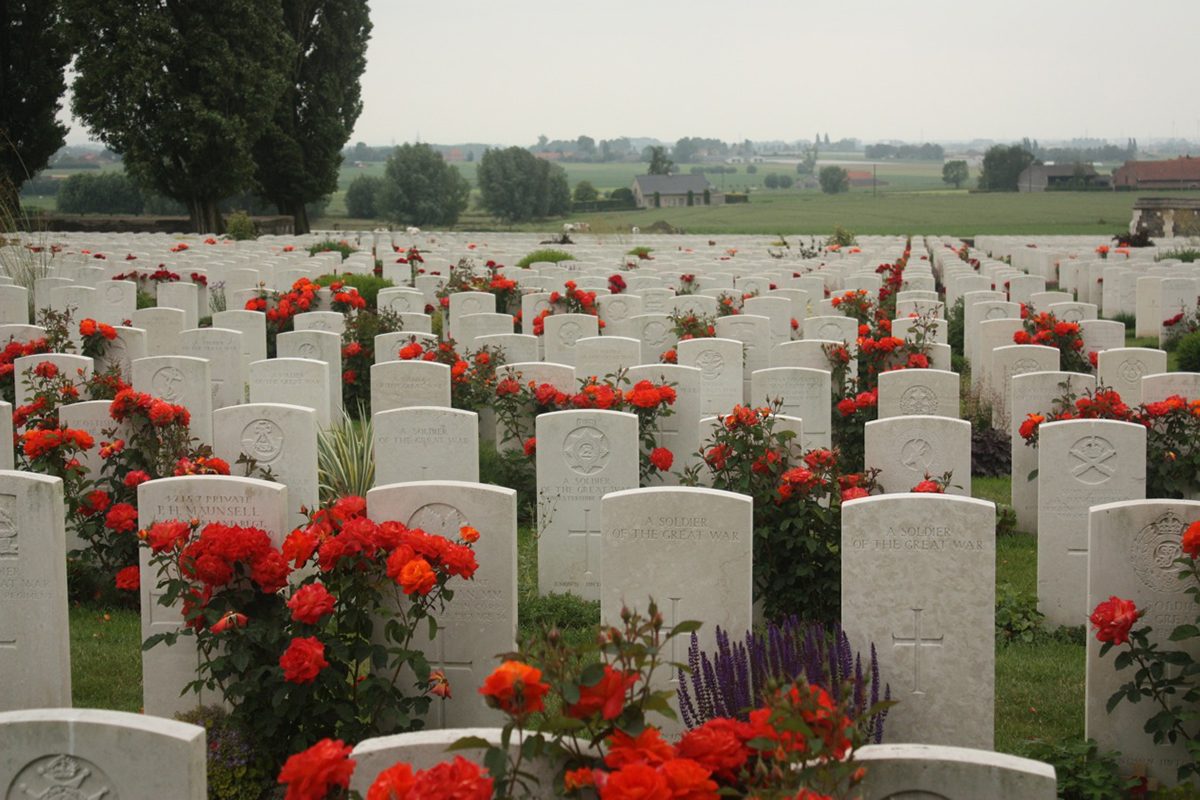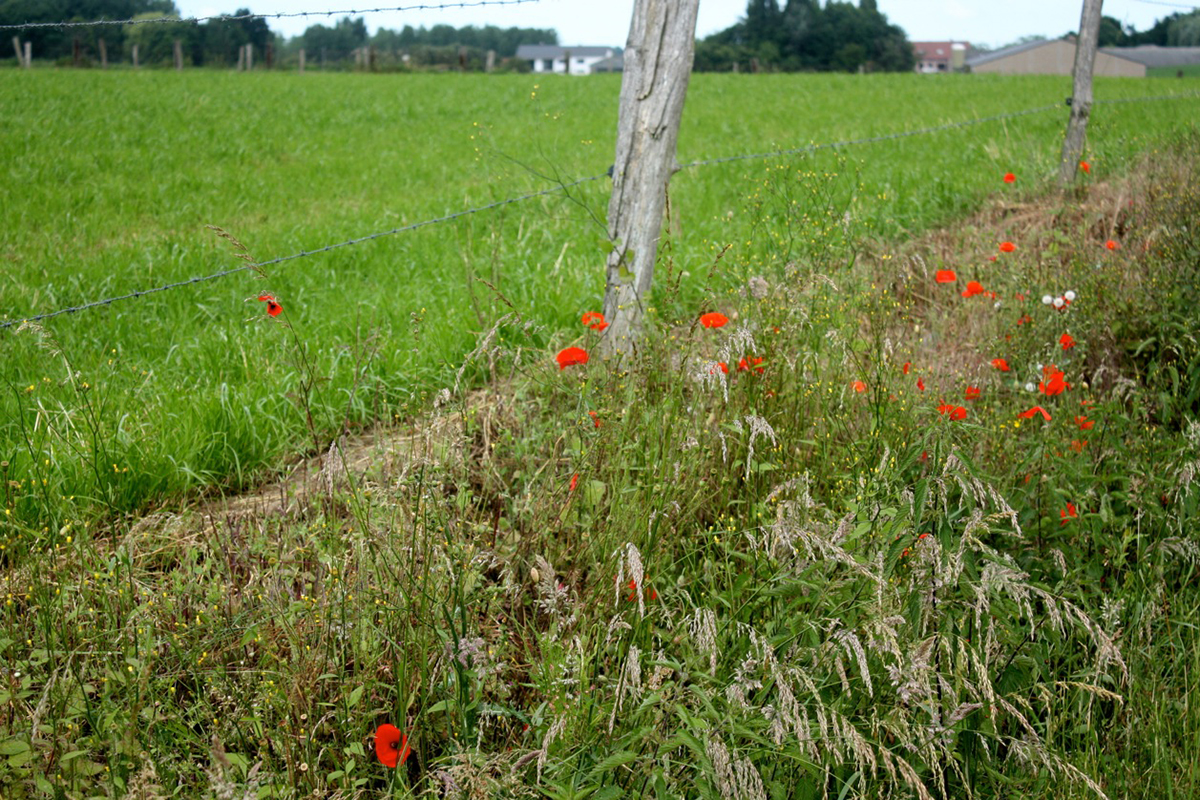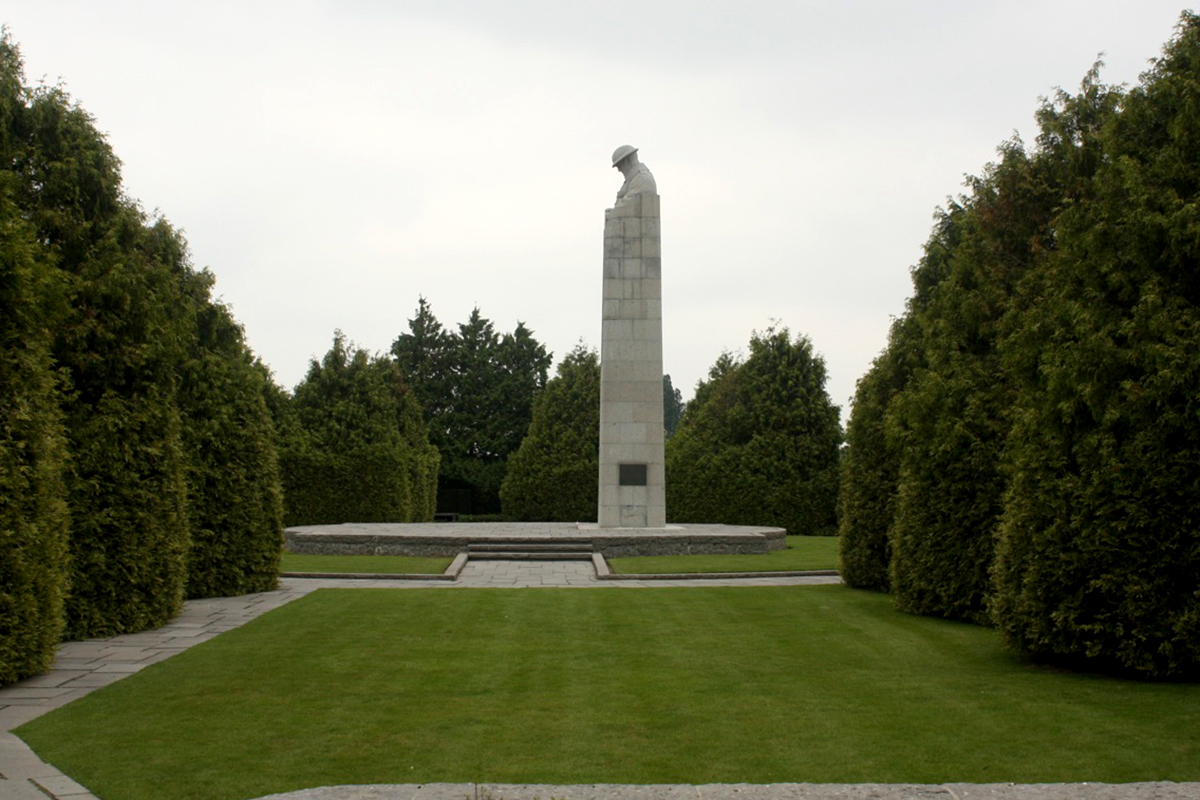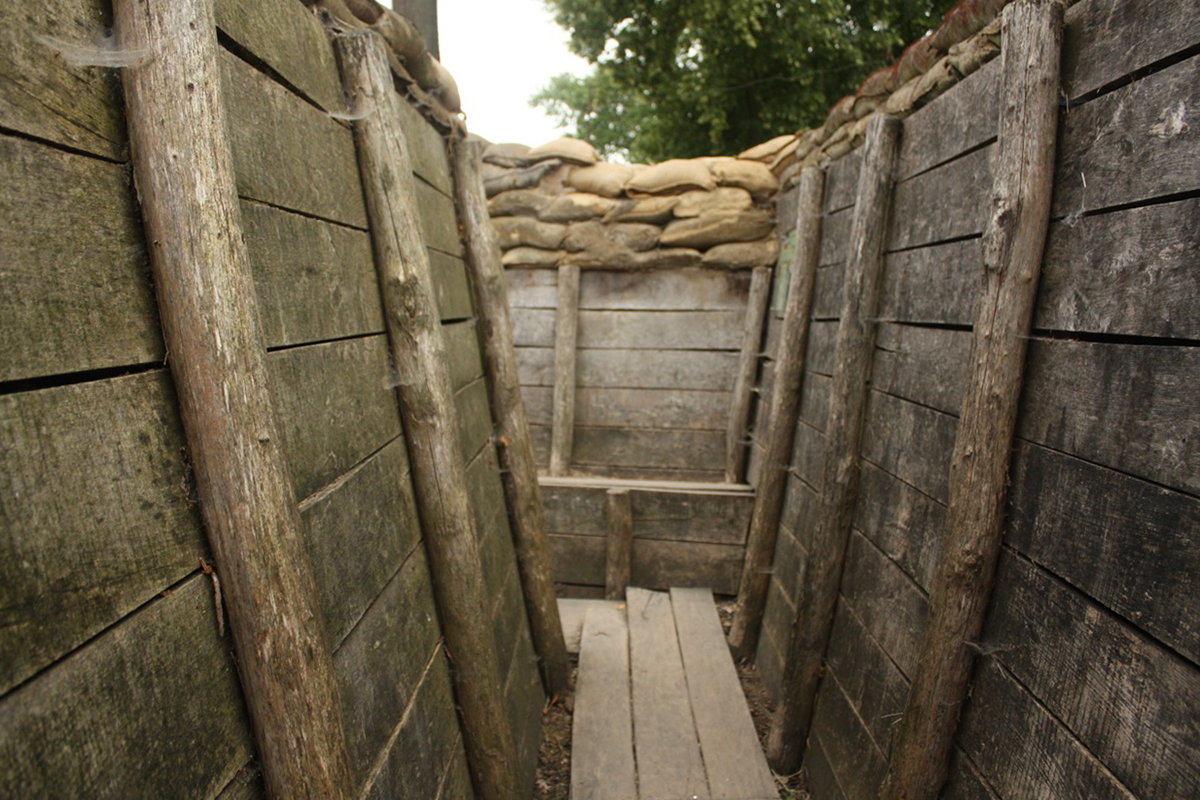
Tyne Cot Commonwealth War Graves Cemetery and Memorial to the Missing, the final resting place for nearly 12,000 First World War servicemen. // Photo from Paul Panchyshyn
Alumni Insights: All is Quiet (Cycling the Ypres Salient)
Ypres, Belgium, may seem like an odd place to go for a vacation. It doesn’t jump off any map and looks difficult to pronounce. Locals even grudgingly accept its English pseudonym, “wipers.” What makes Ypres unique is that between 1914 and 1918 it saw some of the most horrific battles of the First World War. If you ever want to understand Canada’s role in the “Great War” then Ypres is the place to go. There are historical sites, memorials and beautiful cemeteries everywhere, and all are connected by a web of bicycle paths called the Ypres Salient. For Julia and I, this was a bucket list item. Here are some of the highlights.
We rented bicycles then started our tour of the North Salient. Ten minutes from Ypres we arrived at the site where Canadian surgeon, John McCrae, penned the poem “In Flanders Fields.” This small, meticulously manicured cemetery housed several concrete bunkers where medics, including McCrae, worked around the clock fixing broken bodies from the front lines. He wrote the poem after losing a friend on the operating table, but McCrae never saw the end of the war either, dying near Ypres in 1918.

Bright red poppies pepper the roadsides in the South Salient. // Photo from Paul Panchyshyn
We left and rode 30 minutes to Langemark, home of the German student cemetery, aptly named because most of the Germans buried there were teenagers. In one small section, some 40,000 lay in an unmarked “comrade” grave. Our next destination was The Brooding Soldier, known locally as “The Canadian.” This exact location is where Canadian troops stood their ground against the first German gas attack during the Second Battle of Ypres. The monument faces the direction of the gas cloud that lurched across no man’s land towards the unsuspecting Canadian soldiers. It’s a sombre place, but the garden and statue were stunningly poignant and beautiful.

The Brooding Soldier faces the direction of the first poison gas cloud. // Photo from Paul Panchyshyn
We cycled another 20 minutes along the “Gifgas” route to Tyne Cot, one of the largest cemeteries in the region. It’s perched upon a hill with a commanding view of the countryside. The majority of soldiers memorialized at this cemetery died in the Third Battle of Ypres, the infamous Battle of Passchendaele. Many of the headstones are nameless, bearing this simple epitaph: “A SOLDIER OF THE GREAT WAR. KNOWN UNTO GOD.”
After strolling through Tyne Cot, we left for the town of Zonnebeke and our final destination of the day: the Passchendaele Museum. After the impressive museum the tour continued through a tunnel as distant shell explosions caused the lights to flicker. It was almost too realistic. We then emerged into the trenches which, a hundred years earlier, were wet, smelly, muddy, and rat infested. Soldiers cowered under constant fear of snipers, artillery and poison gas attacks, but the alternative was going over the top and being shredded by machine gun fire or drowning in the Passchendaele mud.

Trenches at The Passchendaele Museum. // Photo from Paul Panchyshyn
The second day wound through smaller, more intimate cemeteries in the South Salient. Along the sparsely driven roads, clusters of bright red poppies quivered in the breeze. At Chester Farm cemetery, the sun finally peeked through the shroud of grey cloud and brought out vivid colours of green grass, red and blue flowers, and ghostly white headstones. Our next destinations were two small cemeteries in a wooded oasis called Bluff and Hedgerow. At Hedgerow there’s a display of artifacts exhumed from the soil. We then cycled to Hill 60, a piece of land barely 500 metres wide that had been conquered and reconquered four different times. Several thousand soldiers still lie buried under the artillery-scarred landscape.
We continued our ride through the pastoral countryside, stopping briefly at Mount Sorrel to admire another impressive Canadian memorial then the massive Hooge Crater cemetery. We finished with a stop at the Princess Patricia’s Canadian Light Infantry memorial, which recalled the First Battle of Ypres where the PPCLI soldiers fought bravely despite losing 90 per cent of the division. They halted the German advance to Ypres in 1914 and gave the Commonwealth armies a sliver of hope, changing the entire course of the war.
Cycling the Ypres Salient was an amazingly educational and emotional experience. We too often take Remembrance Day for granted without understanding its true meaning and appreciating the sacrifices, especially as they relate to Canada and all Canadians. To this day, people still leave photos on grave sites dedicated to a great uncle, grandfather, and great-grandfather, yet the people in these photographs could have been culled from high school yearbooks. Finally, the Ypres countryside is a lovely place to go cycling. It’s mostly paved, flat and safe, which makes it great for a family excursion. It’s also an unforgettable contextual history lesson. One hundred years ago this November 11th, peace finally returned to Flanders Fields, proving that even in the darkest times, there is still hope for humanity.
Paul Panchyshyn [BA/91, ExEd/12] graduated with a History degree from the University of Manitoba in 1991, then completed a Certificate in Teaching English as a Second Language in 2011. When Paul and his wife, Julia, are not traveling, he works for Parking Services. You can read more about some of their travel experiences at Adventure Travel for the Unadventurous.






